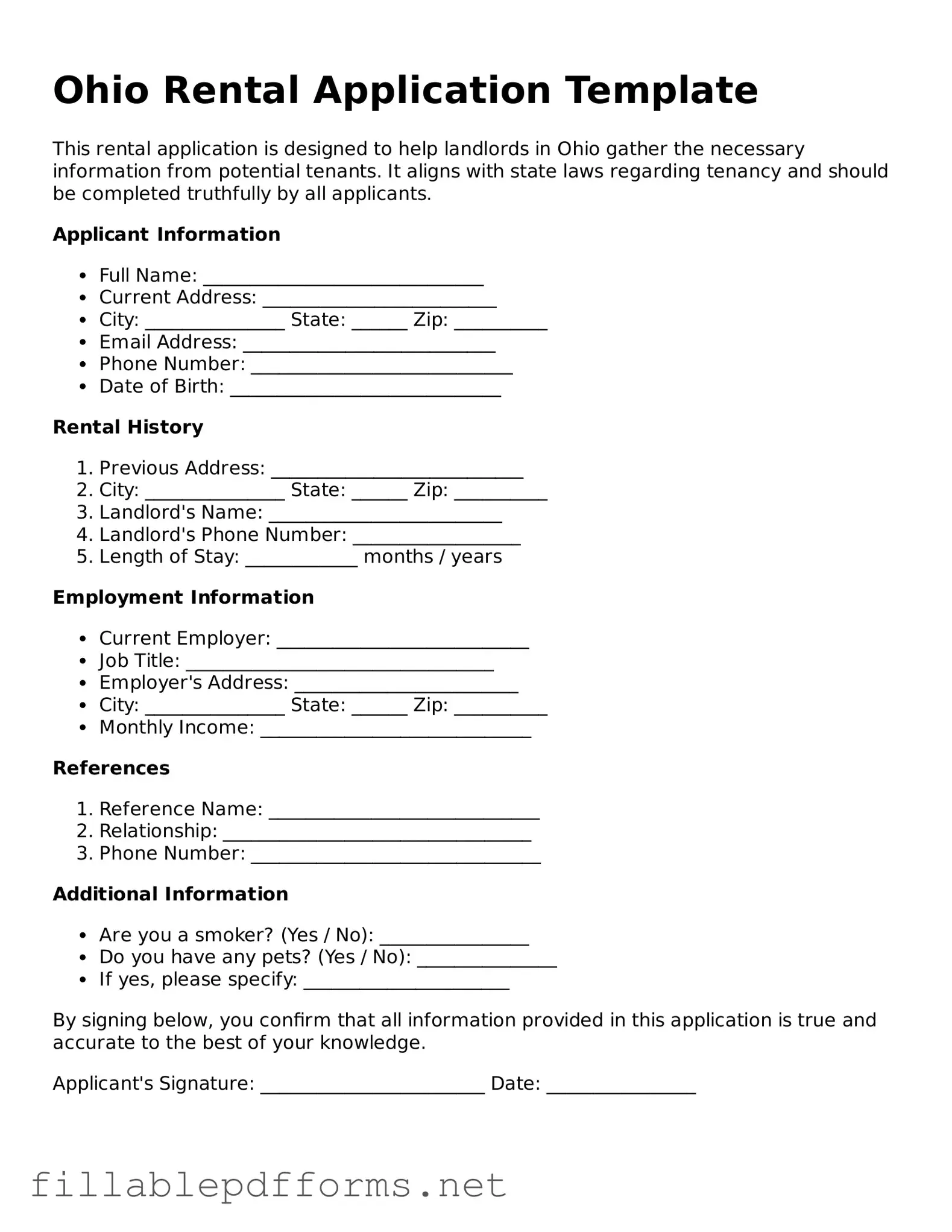The Ohio Rental Application form serves as a crucial document for both landlords and prospective tenants, facilitating a smooth leasing process. This form typically collects essential information about the applicant, including their name, contact details, and rental history. Landlords often seek insights into the applicant's financial stability, so the form may require details about income, employment, and credit history. Additionally, references from previous landlords or personal contacts can be requested to gauge the applicant's reliability. It’s important for applicants to be aware that providing accurate and truthful information is vital, as any discrepancies could lead to denial of the application. Furthermore, understanding the specific requirements and terms outlined in the form can help applicants prepare better and increase their chances of securing a rental property. Overall, the Ohio Rental Application form is not just a bureaucratic hurdle; it is a foundational step in establishing a positive landlord-tenant relationship.
